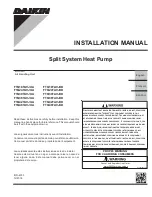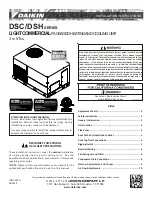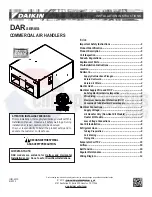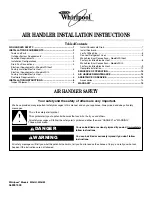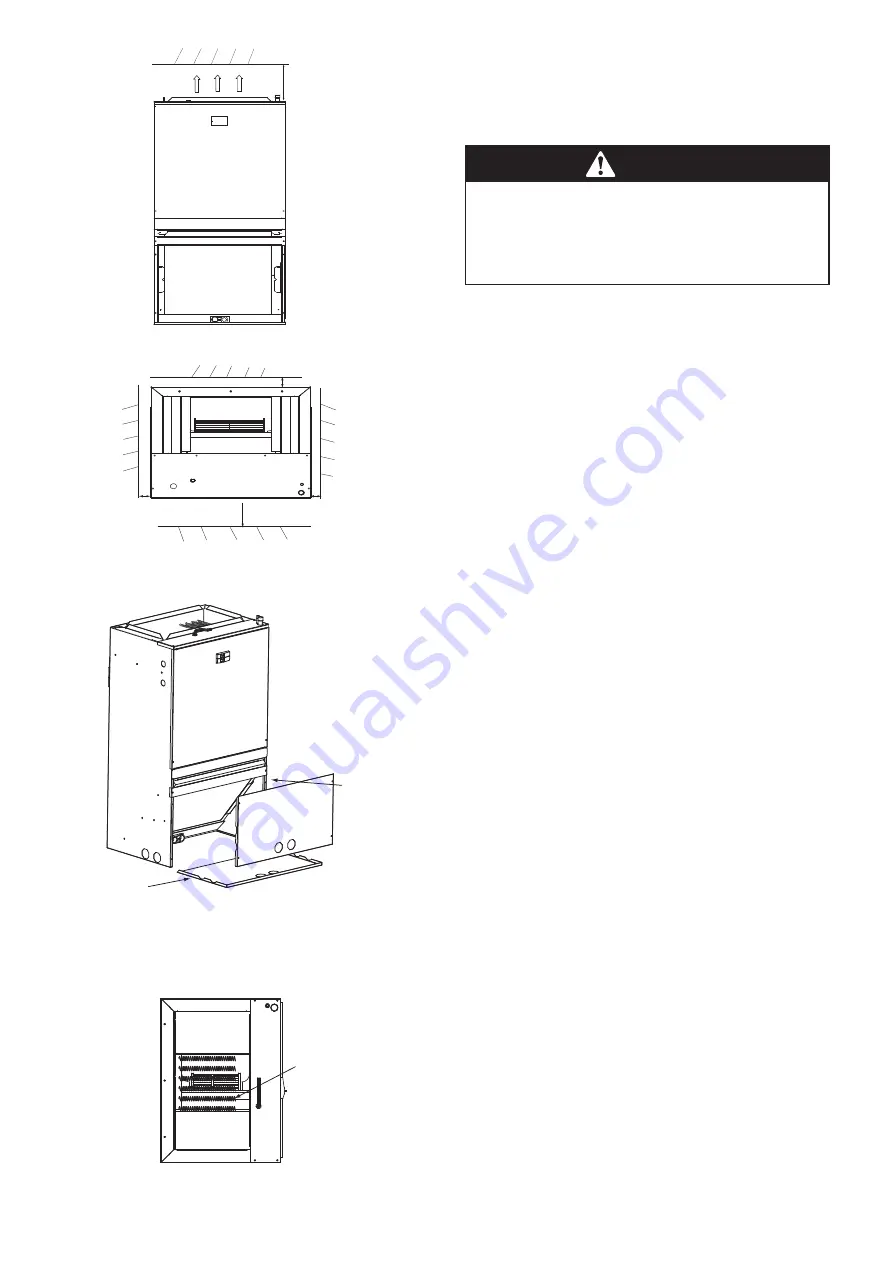
REMOVE BOTTOM COIL
PANEL OFF PLATE
INSTALL FRONT
COIL PANEL
Fig. 3-4 DIFFERENT AIR SUPPLY
3.2.3 CONFIGURATIONS
Fig.3-3 Space for frame mount
≥0"
Fig. 3-5 HEATER ELEMENTS INSTALLATION
ELECTRIC HEATER KITS
Bottom Return Conversion: Divert the return air from the factory
standard front return to a bottom return.Remove the cross brace
when converting cabinet to bottom return.
3.3 Duct Work
Field ductwork must comply with the National Fire Protection
Association NFPA 90A, NFPA 90B and any applicable local
ordinance.
WARNING
Do not, under any circumstances, connect return ductwork to any
other heat producing device such as fireplace insert, stove, etc.
Unauthorized use of such devices may result in fire, carbon
monoxide poisoning, explosion, personal injury or property
damage.
Sheet metal ductwork run in unconditioned spaces must be insulated
and covered with a vapor barrier. Fibrous ductwork may be used if
constructed and installed in accordance with SMACNA Construction
Standard on Fibrous Glass Ducts. Ductwork must comply with
National Fire Protection Association as tested by U/L Standard 181
for Class I Air Ducts. Check local codes for requirements on
ductwork and insulation.
• Duct system must be designed within the range of external static
pressure the unit is designed to operate against. It is important that
the system airflow be adequate. Make sure supply and return
ductwork, grills, special filters, accessories, etc. are accounted for in
total resistance. See airflow performance tables in this manual.
•
Design the duct system in accordance with “ACCA” Manual “D”
Design for Residential Winter and Summer Air Conditioning and
Equipment Selection. Latest editions are available from: “ACCA” Air
Conditioning Contractors of America, 1513 16th Street, N.W.,
Washington, D.C. 20036. If duct system incorporates flexible air
duct, be sure pressure drop information (straight length plus all
turns) shown in “ACCA” Manual “D” is accounted for in system.
• Supply plenum is attached to the 3/4” duct flanges supplied with
the unit.
•
IMPORTANT:
If an elbow is included in the plenum close to the
unit, it must not be smaller than the dimensions of the supply duct
flange on the unit.
•
IMPORTANT: If connected to the blower casing, the front flange
on the return duct must not be screwed into the area where the
power wiring is located. Drills or sharp screw points can damage
insulation on wires located inside unit.
•
Secure the supply and return ductwork to the unit flanges, using
proper fasteners for the type of duct used and tape the duct-to-unit
joint as required to prevent air leaks.
3.4 Condensate Drain
The unit is supplied with primary and auxiliary condensate drains
that have 3/4” NPT connections. Both drains must be trapped
outside the unit and piped in accordance with applicable materials
and building codes. Do not reduce the drain line size less than
the connection size on the drain pan. Condensate should be piped to
an open drain or to the outside. All drains must pitch downward away
from the unit a minimum of 1/4” per foot of line to ensure
proper drainage. Insulate the primary drain line to prevent sweating
where dew point temperatures may be met. (Insulation is
optional depending on climate and application needs.)
Important:
If cleanout Tee is used, standpipe must be sealed/capped.
Top view of the indoor unit clearance(including air duct).
≥
20"
≥0"
≥24"
≥0"
Front of unit
AIRFLOW
5













